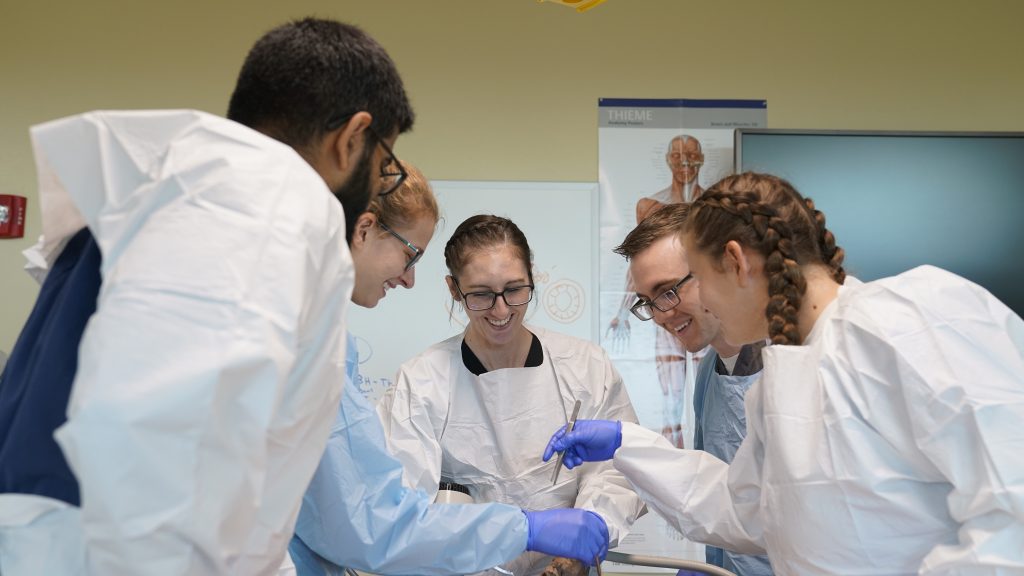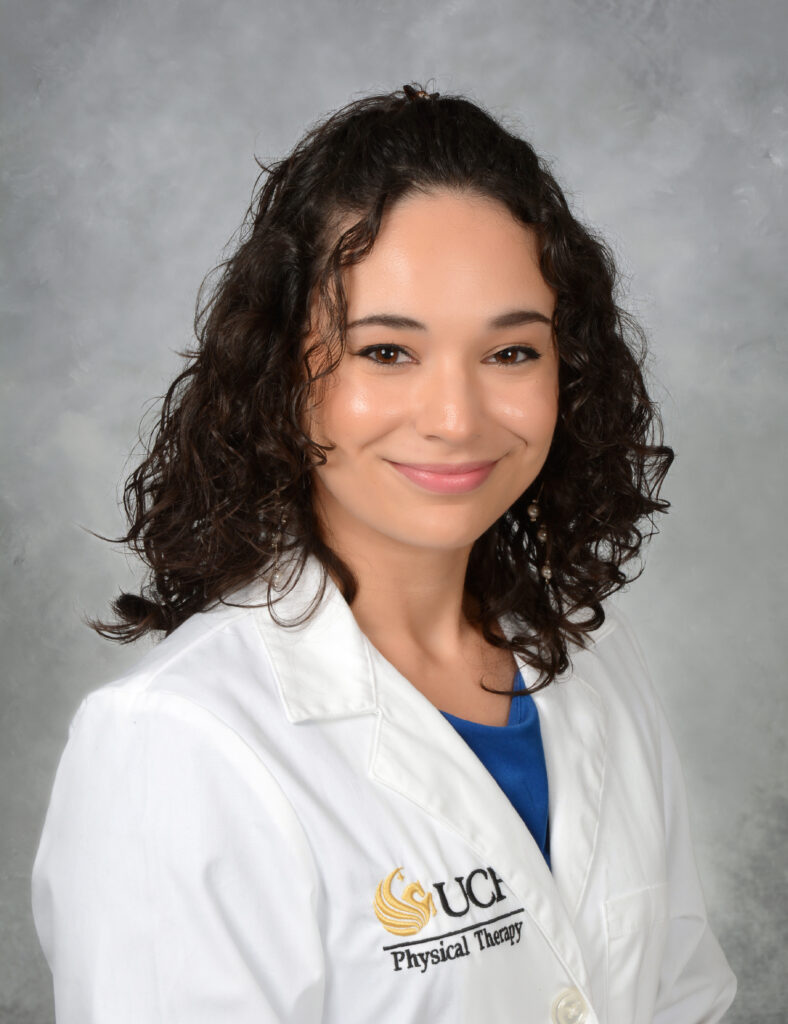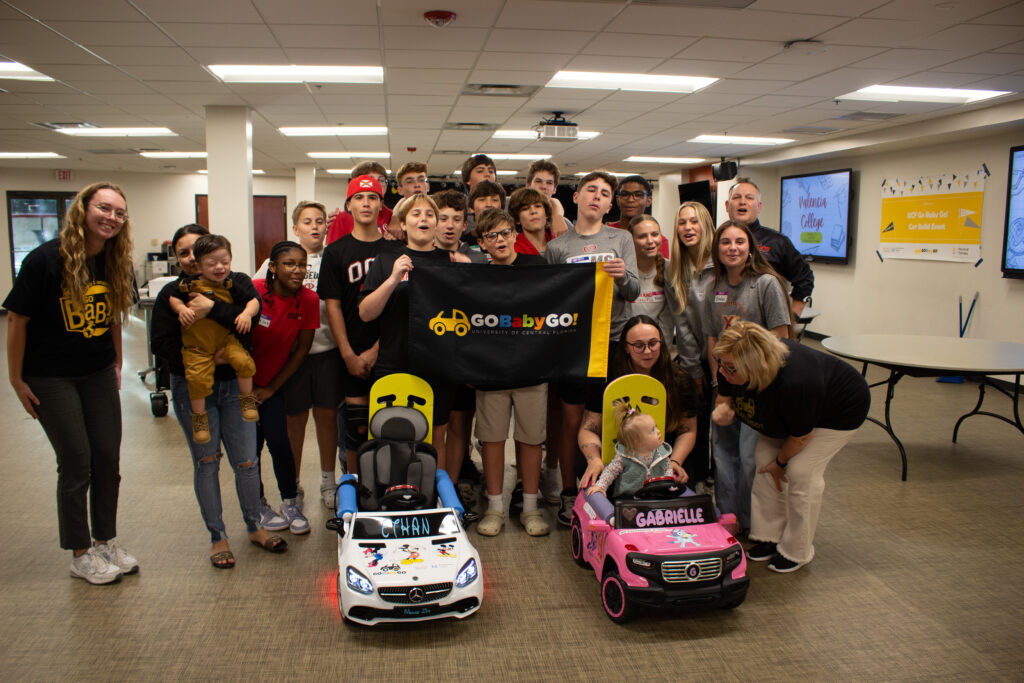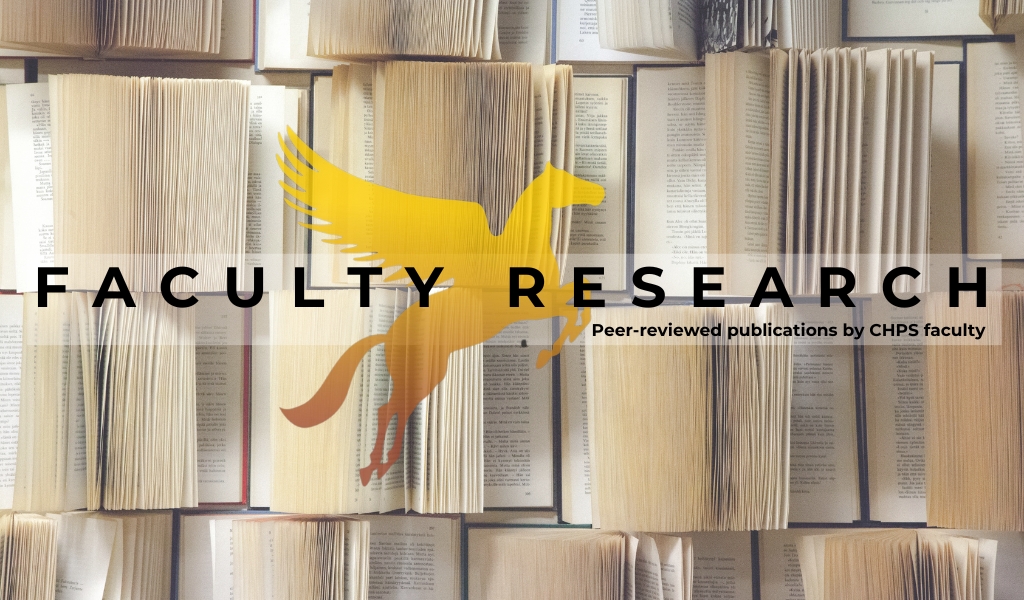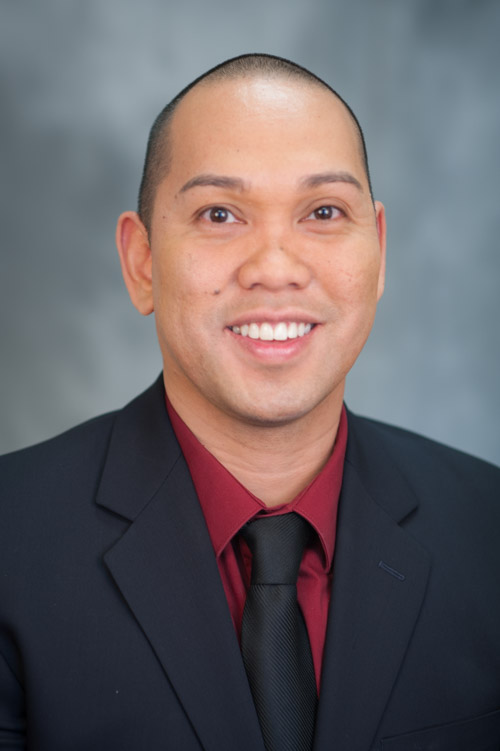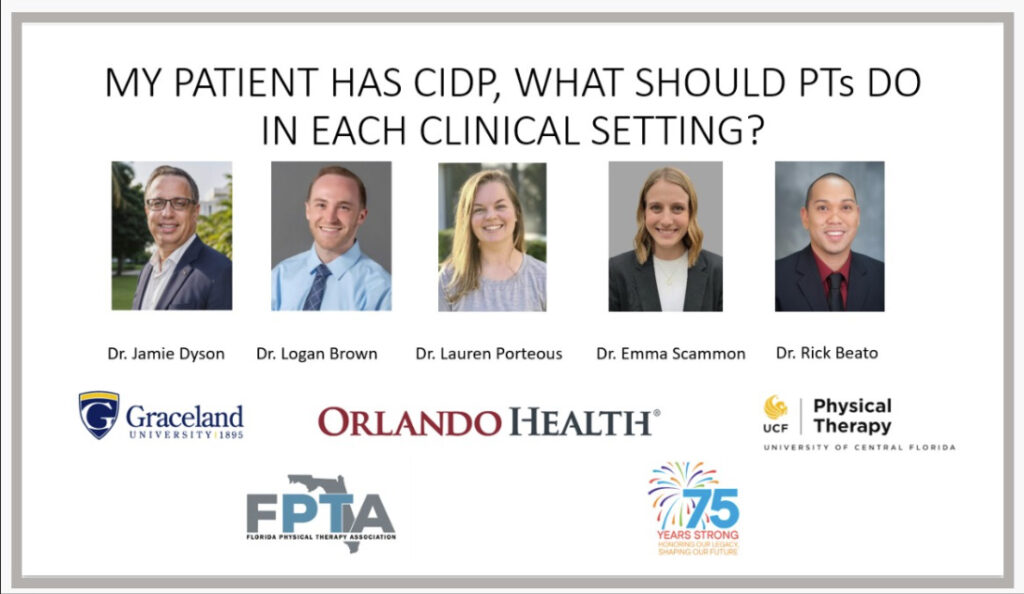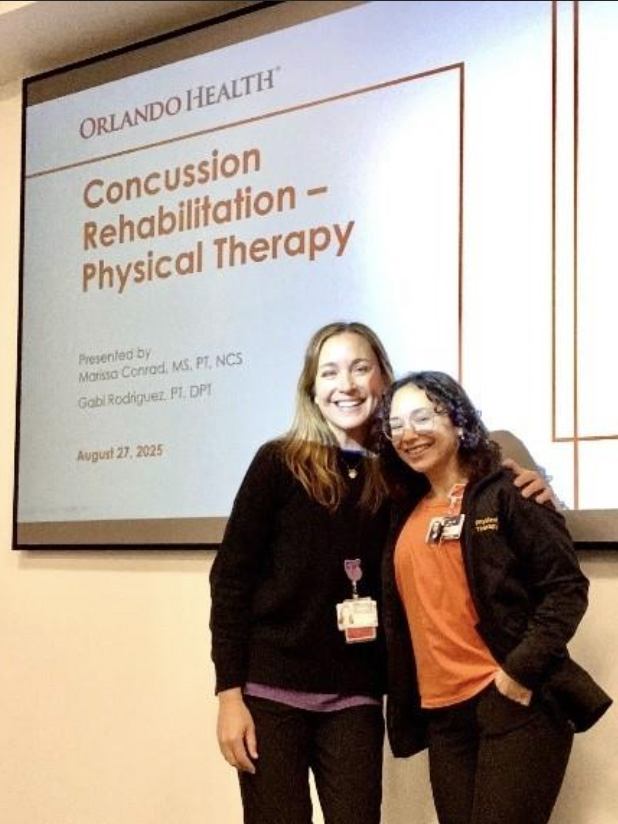Kayla Combs stands at the head of the Anatomy Lab table surrounded by medical students examining their patient’s musculoskeletal system. “If you pull on this tendon here, it will cause the fingers to move,” Combs demonstrates.

But the teacher isn’t a med school faculty member. She’s a doctoral candidate in UCF’s physical therapy program program participating in an interdisciplinary session designed to better educate future doctors on human anatomy. She is one of three PT graduate students serving as teaching assistants during this year’s Anatomy Lab module.
“It’s a win-win situation,” says Dr. Daniel Topping, who directs the College of Medicine’s Anatomy Lab and began the physical-therapists-as-educators program. “Physical therapy students get more intensive anatomy training than our medical students because their profession is very anatomy dependent. They are so knowledgeable and great with the med students that it’s just like having another faculty member. It was an experiment that I think is going really well.”
The College of Medicine’s Anatomy Lab module is unique nationally. Cadavers are considered a student’s first patient. First-year medical students don’t just memorize organs and body systems – they become forensic detectives trying to determine their patient’s cause of death. PT students provide additional expertise, Dr. Topping said, because they have spent seven months studying in a cadaver lab compared with 17 weeks for med students.
The PT students — Combs, Akash Bali and Kelly LaMaster — were chosen based on their expertise and teaching experience. They come in every Friday for the four-hour lab, and teach under the supervision of Dr. Topping and other core and volunteer faculty.
“What’s really good as physical therapy students, is that we get to open their eyes to what we do and offer them a different perspective on anatomy,” Combs said, “like having them pull on tendons to see what the muscle actually does, actually seeing that it flexes the finger or flexes the toe.”
“And in teaching them, we’re also teaching ourselves,” Combs says. “Our PT labs are purely about identification. For the med students, their lab is much more about investigating and asking questions, as they have to determine the cause of death of their ‘patient’. So it’s been fun to see them question things, whether or not an organ looks normal or not and I learned a lot too from that process.”
The PT students say the collaboration has been an opportunity to “get inside the mind of med students” which will give them a better understanding of the physician’s perspective as far as pathologies, clinical diagnoses and treatment.
“In the future when we need to talk to a physician about a patient we will know where the physicians mind is at or why they made the referral or recommendation,” LaMaster said. “When everyone is on the same page, the better the outcomes are going to be for the patient.”
Medical students enjoy the casual peer-to-peer interaction, which they say helps them learn better. “Being students themselves, they understand what it is like to learn anatomy for the first time,” said medical student Kevin Boyd. “And so they’re able to sort of communicate a little differently than faculty, and we felt more comfortable asking them questions that we would probably be intimidated to ask faculty.”
With the development of UCF’s new Academic Health Science Center (AHSC), which will ultimately bring many UCF health programs to Lake Nona, Dr. Topping says such collaborations are only the beginning of an exciting future for healthcare education.
“Anatomy is a discipline that’s so fundamental to all healthcare professions, speech therapy, physical therapy, nursing, anyone involved in direct patient care, and we have such a great facility here, so it’s just a great place for us to collaborate and to begin partnerships.”
He and other AHSC faculty hope to make such educational partnerships a staple for the new UCF health sciences center. “It was a very easy decision to make when Dr. Topping approached us with this idea,” said Dr. Patrick Pabian, program director for the Doctor of Physical Therapy program. “I think interprofessional collaborations such as these will provide a more well-rounded healthcare provider both for physical therapists and medical doctors. Getting our students working together and becoming familiar with each other as much as possible is paramount, because it’s really going to benefit patients in the future.”
